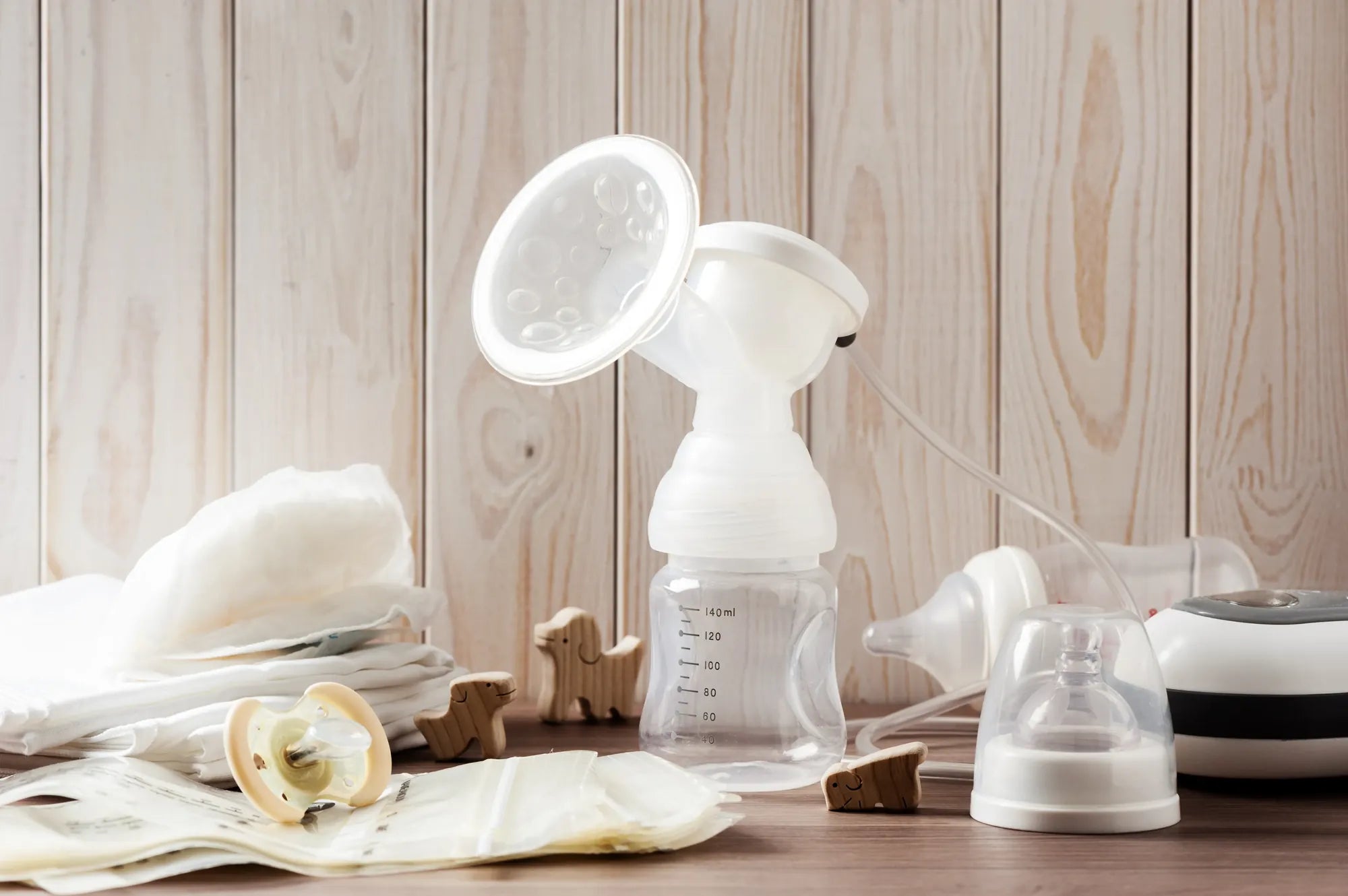Inicio
Pregnancy, Breastfeeding, and Pumping: The Ultimate Guide for Moms
How Often Do I Clean Breast Pump Parts: A Complete Guide

How Often Do I Clean Breast Pump Parts: A Complete Guide
Keeping your breast pump parts clean is one of the most important steps in ensuring the health and safety of your baby. Whether you're a new parent or an experienced one, understanding how often to clean breast pump parts is crucial. This guide will walk you through everything you need to know about maintaining your breast pump equipment, from frequency to best practices.
Why Cleaning Breast Pump Parts is Essential
Breast milk is a perfect breeding ground for bacteria, and if your pump parts are not cleaned properly, harmful bacteria can grow and contaminate the milk. This can lead to infections or illnesses in your baby. Regular cleaning ensures that your breast pump remains safe to use and that your baby receives clean, healthy milk.
How Often Should You Clean Breast Pump Parts?
The general rule of thumb is to clean your breast pump parts after every use. This means that if you pump multiple times a day, you should clean the parts each time. However, there are some exceptions and additional considerations to keep in mind.
After Every Use
Cleaning your breast pump parts after every use is the most effective way to prevent bacterial growth. This includes all parts that come into contact with breast milk, such as the flanges, valves, membranes, and bottles. Rinse the parts with cool water immediately after use to remove any milk residue, then wash them thoroughly with warm, soapy water.
If You Pump Multiple Times a Day
If you pump multiple times a day, you may wonder if you need to clean the parts each time or if you can wait until the end of the day. While it's best to clean after each use, some parents opt to store the parts in the refrigerator between sessions to slow bacterial growth. However, this is not a substitute for cleaning, and the parts should still be washed thoroughly at the end of the day.
When to Deep Clean
In addition to daily cleaning, it's a good idea to deep clean your breast pump parts once a week. This involves soaking the parts in a solution of water and a small amount of bleach or using a steam sterilizer. Deep cleaning helps to remove any lingering bacteria and ensures that your pump parts are as clean as possible.
Best Practices for Cleaning Breast Pump Parts
Proper cleaning techniques are just as important as frequency. Here are some best practices to follow:
Use Hot, Soapy Water
Always use hot, soapy water to clean your breast pump parts. Hot water helps to break down milk fats and proteins, making it easier to remove residue. Use a mild dish soap and a clean brush or sponge to scrub the parts thoroughly.
Rinse Thoroughly
After washing, rinse the parts thoroughly with clean water to remove any soap residue. Soap residue can be harmful if ingested by your baby, so make sure to rinse well.
Air Dry
Allow the parts to air dry completely before reassembling or storing them. Avoid using a towel to dry the parts, as towels can harbor bacteria. Place the parts on a clean, dry surface or use a drying rack.
Sanitize Regularly
While daily cleaning is sufficient for most parents, sanitizing your breast pump parts regularly can provide an extra layer of protection. You can use a steam sterilizer, boiling water, or a sanitizing solution to kill any remaining bacteria.
Common Mistakes to Avoid
Even with the best intentions, it's easy to make mistakes when cleaning breast pump parts. Here are some common pitfalls to avoid:
Not Cleaning Immediately
Leaving breast pump parts unwashed for extended periods allows bacteria to grow. Always rinse the parts with cool water immediately after use and wash them as soon as possible.
Using Harsh Chemicals
Avoid using harsh chemicals or abrasive cleaners on your breast pump parts. These can damage the parts and leave behind harmful residues. Stick to mild dish soap and hot water.
Not Replacing Worn Parts
Over time, breast pump parts can wear out and become less effective at cleaning. Regularly inspect your parts for signs of wear and replace them as needed. This includes valves, membranes, and tubing.
Tips for Busy Parents
Cleaning breast pump parts can be time-consuming, especially for busy parents. Here are some tips to make the process easier:
Have Extra Parts on Hand
Having extra breast pump parts can save you time and effort. If you have multiple sets of parts, you can rotate them throughout the day and wash them all at once at the end of the day.
Use a Dishwasher
If your breast pump parts are dishwasher-safe, you can save time by washing them in the dishwasher. Use a gentle cycle and place the parts in a dishwasher basket to prevent them from getting lost or damaged.
Keep Cleaning Supplies Handy
Keep a set of cleaning supplies, such as a brush, soap, and a drying rack, near your pumping area. This makes it easier to clean the parts immediately after use.
When to Seek Professional Help
If you're unsure about how to clean your breast pump parts or if you notice any signs of mold or damage, it's a good idea to seek professional help. Contact the manufacturer or a lactation consultant for guidance on proper cleaning and maintenance.
Maintaining a clean breast pump is essential for your baby's health and your peace of mind. By following these guidelines and best practices, you can ensure that your breast pump parts are always clean and safe to use. Remember, a little effort goes a long way in keeping your baby healthy and happy.
Compartir

